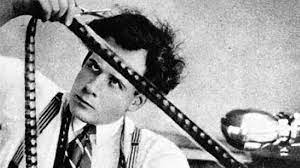Soviet film director Sergei Eisenstein is credited as the godfather of the montage and innovator of the Soviet montage theory. He developed his famous “methods of montage” across his career, predominantly featured in his landmark achievement Battleship Potemkin.
Montage is a filmmaking
technique that uses a series of short images, collected together to tell a story or part of a story.
Montage being a French word means for “assemble” or “edit”. This is usually used to advance the plot , without using any words and without showing all the detail of what’s going on. There are an infinite number of different types of montages
These
five basic methods of montage. are as follows:
· Metric
· Rhythmic
· Tonal
· Over tonal/Associational
· Intellectual
1. METRIC MONTAGE
This first method of montage example is perhaps the simplest
method technically achieved. The metric montage method edits together different
shots by following to an exact measurement or number of frames. These
measurements of frames aren’t picked based on any feeling or emotional
connection. Instead, the creator goes by a strict measurement and sticks to it.
The overall effect is a bit the effects of this
method can be frustrating as well as cinematically shaking.
2. RHYTHMIC MONTAGE
This “rhythmic” method is defined by editing shots together
according to the context of each shot. Many
scenes and sequences employ this rhythmic montage technique by making
compositional decisions as to how long each shot plays before the next one
intercuts.( To intercut is to contrast one shot
or scene with another contrasting one. When a film sequence jumps backward and forward
between the two scenes, we call it an intercut. For example, a car chase
scene .)
3. TONAL MONTAGE
Another example from Eisenstein’s editing the “tonal” method of montage.
It’s defined by how it edits based on the emotional
meanings—or tone—of each shot. This tonal style has helped inform filmmakers’
editing decisions across decades of cinema classics.
4. OVERTONAL/ASSOCIATIONAL MONTAGE
This method further combines all the elements of
metric, rhythmic, and tonal montage methods together to create montages that
have an even greater effect on how audiences can perceive a film’s “tones” or “overtones.”
In over tonal montage
, filmmakers can further use all
elements of filmmaking—composition, soundtrack, and editing—to create abstract
themes and rich tapestries of meaning.
5. INTELLECTUAL THE MONTAGE MONTAGE
By the late 1920s, his approach to
this aim was the related goal of understanding how images could be combined so
as to provide the viewer with an awareness of abstract concepts. On a
superficial level, such brainwashing by images would seem to arise by the ideas
and values conveyed in the films. But in trying to arrive at a means of
producing abstract concepts.
********************************************************************************************
******
MUSICAL MONTAGE
a. In a
musical montage, the shots are accompanied by a song that somehow fits with the theme of what’s being shown.
B. NARRATED MONTAGE
If the montage is not set to music, there might be a character narrating
what’s going on. As we tell the story, the viewer would see a montage of the
officer stepping over the line with suspects in various situations.
c. PHOTO MONTAGE
Instead of filmed shots, a montage can also be formed
out of still images. This technique is also frequently set to music, creating a
“musical photo montage.
























0 comments:
Post a Comment